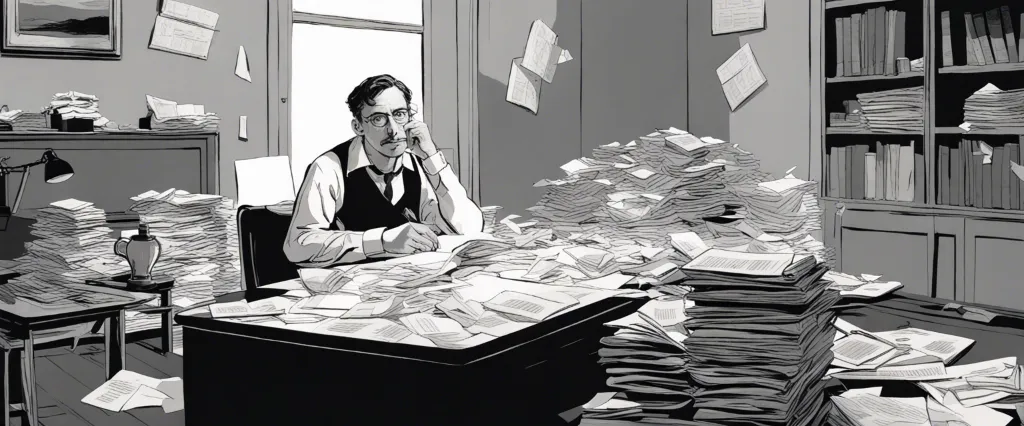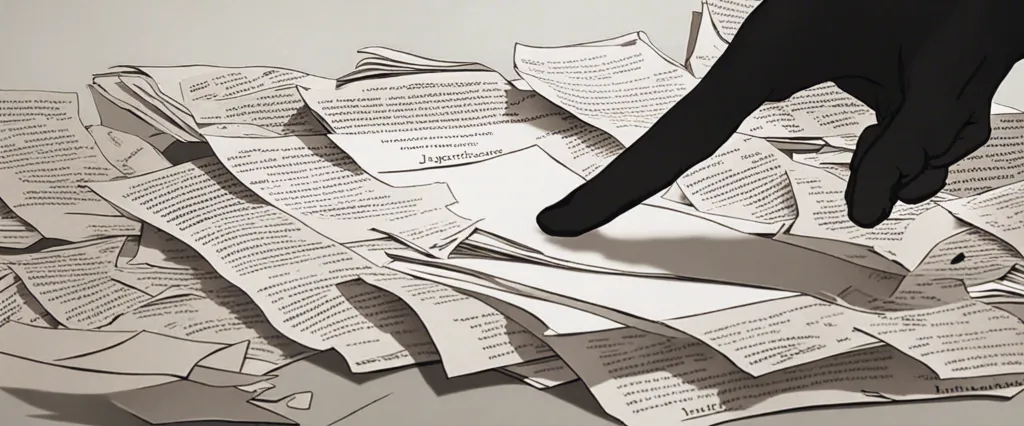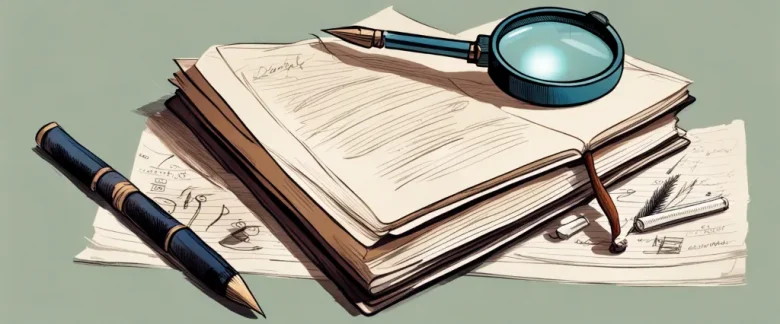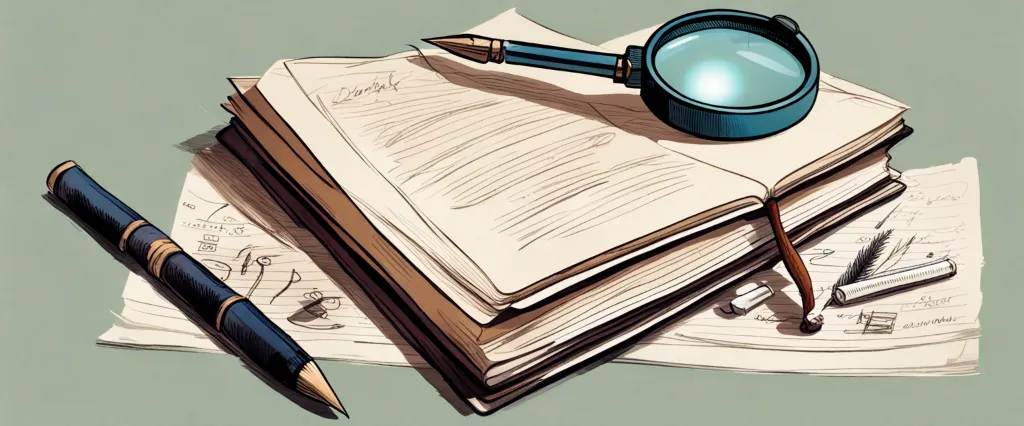In the groundbreaking work “Paper,” Mark Kurlansky takes us on a captivating journey through the history and significance of paper. As a renowned American writer, journalist, and former foreign correspondent, Kurlansky has established himself as a masterful storyteller who skillfully intertwines history, culture, and the impact of everyday objects in his works. His ability to illuminate the often overlooked aspects of our society has earned him critical acclaim and a loyal following of readers. Now, with “Paper,” Kurlansky once again delves into the depths of a seemingly simple subject to unravel its multifaceted narrative and highlight its profound influence on human civilization.
Chapter 1: The Origins of Paper
Chapter 1: The Origins of Paper, from the book Paper by Mark Kurlansky, explores the ancient beginnings of paper as a significant medium for recording and communication. The chapter delves into the early origins of paper, starting with its predecessor, papyrus, which was made from the reeds of the papyrus plant. However, the chapter mainly focuses on the birth of paper in China.
The story of paper in China begins around 105 CE, during the Eastern Han dynasty. According to legend, one of the emperor’s officials, Cai Lun, was tasked with finding an alternative to the heavy and bulky bamboo tablets used for writing at the time. Cai Lun experimented with various materials and techniques, eventually discovering a successful process of making paper from mulberry bark, hemp, old fishing nets, and worn-out rags.
This newfound invention of paper revolutionized writing and communication. It quickly spread throughout China and continued to evolve over the centuries. The book highlights the significance of paper during the Han dynasty, where it played a vital role in bureaucratic record-keeping, the transmission of ideas, and the flourishing of literature and art.
Moreover, the chapter emphasizes the Chinese as the primary inventors and custodians of paper technology until it eventually spread to the rest of the world. It also delves into the scarcity of paper in ancient times due to the labor-intensive manufacturing process and the relentless demand for it.
In conclusion, Chapter 1 of Paper by Mark Kurlansky provides a detailed account of the origins of paper, particularly focusing on China’s significant contribution. It explains how paper transformed the way ideas were recorded, shared, and preserved, setting the stage for its future global impact.
Chapter 2: The Spread of Papermaking
Chapter 2: The Spread of Papermaking
In Chapter 2 of the book “Paper” by Mark Kurlansky, the author explores the early spread of papermaking techniques and knowledge from China to the Islamic world. This development significantly impacted the advancement of paper production and its influence across various cultures throughout history.
Kurlansky begins by highlighting how papermaking was originally discovered in China, where it had been a closely guarded secret for centuries. The Chinese were the pioneers of paper, using mulberry bark as the main material to create a pulp that was spread thinly and dried. Their papermaking techniques were incredibly advanced, allowing them to produce high-quality paper even before the spread of the knowledge.
The chapter then delves into how papermaking spread beyond China. It focuses on how the art of papermaking gradually made its way westward, particularly through the Silk Road, which facilitated trade and cultural exchange across Eurasia. The Muslim conquests in the 7th century helped speed up this diffusion, as they encountered and adopted Chinese papermaking practices during their incursion into Central Asia.
The Islamic world quickly embraced paper, recognizing its vast potential and practicality. Kurlansky highlights how it became integrated into the Islamic culture, with paper mills cropping up in numerous cities such as Samarkand, Baghdad, and Damascus. Here, skilled craftsmen refined the Chinese techniques and introduced their own innovations, such as using linen instead of mulberry bark for pulp. This commitment to papermaking led to a rapid increase in paper production and availability, fostering intellectual and cultural advancements across the Islamic world.
Kurlansky extensively discusses the profound impact of paper on Islamic culture, from the spread of learning and literature to the rise of bureaucracy and record-keeping. Paper became pivotal in the Islamic Golden Age, facilitating the development of science, mathematics, and philosophy. Moreover, it played a vital role in the expansion of papermaking to other regions, such as North Africa and Europe, through the Muslim conquests and subsequent trade networks.
In conclusion, Chapter 2 of “Paper” explores how the knowledge and techniques of papermaking were transmitted from China to the Islamic world, revolutionizing the production and usage of paper. This cultural exchange and innovation laid the foundation for the influence of paper in the development of various civilizations, setting the stage for its further diffusion throughout history.
Chapter 3: Paper and Religion
Chapter 3: Paper and Religion of the book “Paper” by Mark Kurlansky explores the significant role that paper has played in the development and spread of various religions throughout history. The chapter delves into the origins and impact of paper on religious practices, beliefs, and communication.
Kurlansky begins by tracing the earliest religious texts, which were initially recorded on stone tablets, papyrus, or animal skins. However, the introduction of paper revolutionized the way ancient religious texts were created, shared, and preserved. Paper, being cheaper and more accessible, facilitated the mass production of religious texts like the Bible, Quran, and Buddhist sutras, allowing religious ideas to be disseminated more widely and easily understood by common people. The ability to reproduce texts accelerated the growth and influence of many religions.
Moreover, paper became intimately linked with religious rituals and practices. For instance, paper was used for amulets, offering sheets, and prayer books. In China, the practice of burning paper replicas of various objects was believed to communicate with ancestors or deities. The chapter explores the role of paper money in religious ceremonies and how it symbolized believers’ devotion and connection to the divine.
Additionally, Kurlansky reflects on the political control exerted over the printing and distribution of religious texts. Different religious authorities often sought control over the production of these texts to maintain religious orthodoxy and control their followers. The printing press and the Reformation challenged this authority as religious texts became more accessible and diverse interpretations emerged.
In summary, Chapter 3 of “Paper” explores the profound influence of paper on religious practices and beliefs. The accessibility and mass production of religious texts fueled the spread of various religions, while paper also became intertwined with religious rituals and ceremonies. This chapter reveals how paper played a crucial role in shaping religious ideas, communication, and the religious landscape throughout history.
Chapter 4: Paper and Communication

Chapter 4: Paper and Communication of the book “Paper” by Mark Kurlansky explores the significant role that paper has played in the development and evolution of human communication throughout history.
The chapter begins by highlighting how paper enabled the spread of ideas and knowledge through the invention of the printing press. Johann Gutenberg’s invention revolutionized the dissemination of information by making books more accessible to a wider audience. Paper served as the perfect medium for printing, as it was versatile, affordable, and easy to produce.
Kurlansky then delves into the impact of paper on the scientific revolution. The ability to document and share scientific discoveries on paper facilitated scientific progress and collaboration. By recording experiments and observations on paper, scientists could build upon each other’s work, leading to significant advancements in various fields of study.
The chapter also discusses the role of paper as a tool for propaganda and communication during times of war and political turmoil. Governments and organizations have utilized paper to spread their messages, manipulate public opinion, and rally support for their causes. Examples of this include pamphlets and propaganda leaflets distributed during World War I and II.
Additionally, Kurlansky explores the influence of paper on personal communication. Throughout history, letters have been written on paper to convey emotions, share news, and maintain relationships with loved ones across distances. The chapter highlights how paper allowed individuals to express themselves, record their experiences, and leave behind a tangible legacy for future generations.
In conclusion, Chapter 4 reveals the crucial role that paper has played in revolutionizing communication throughout history, from the spread of ideas through printing to the documentation of scientific discoveries, propaganda dissemination, and personal communication. Paper has not only shaped the development of human civilization but has also connected individuals and cultures across time and space.
Chapter 5: Paper and Power
Chapter 5: Paper and Power of the book “Paper” by Mark Kurlansky focuses on the historical significance of paper as a means of consolidating and maintaining power throughout different civilizations.
The chapter begins by delving into ancient China, where paper was first invented. The author explains that the development of paper had a profound impact on the Han dynasty, allowing the state to disseminate its laws, edicts, and propaganda more efficiently. Paper helped to unify and centralize their vast empire, providing the government with a medium to control its subjects and maintain power over them.
Moving on to the Islamic world, the chapter explores how the introduction of paper influenced the spread and preservation of Islamic culture and knowledge. The Islamic civilization thrived during the Abbasid caliphate, as paper revolutionized the administration and bureaucracy of the state. It facilitated the caliphate’s ability to govern, trade, and communicate, ultimately contributing to its immense power and influence.
Next, the author discusses Europe, where the arrival of paper significantly impacted the Church and the ruling elite. Paper allowed the Church to create and disseminate standardized texts, enabling them to control the spread and interpretation of religious doctrine. Additionally, paper fostered the development of bureaucracy in feudal states, as it provided a medium for record-keeping and governance.
Finally, Kurlansky examines the role of paper in colonial America and the American Revolution. Paper played a crucial part in documenting the grievances of the colonists, circulating their ideas, and mobilizing support for revolution. The chapter explains how the power of the colonial printing press, fueled by paper, contributed to the growth of revolutionary sentiment and the eventual formation of the United States.
Overall, Chapter 5 highlights how paper has been utilized throughout history to consolidate power, centralize authority, control the masses, and shape the course of civilizations.
Chapter 6: Paper and War
Chapter 6: Paper and War of the book “Paper” by Mark Kurlansky explores the significant role that paper and its materials played in shaping and enabling warfare throughout history. Kurlansky begins by highlighting the critical nature of paper in aiding communication during wars, such as the American Revolution and the French Revolutionary Wars.
The chapter focuses on the use of paper for various military purposes, including maps, soldiers’ personal documents, propaganda, and military strategies. Paper maps were vital in plotting routes, understanding terrain, and coordinating troop movements. These maps provided a crucial advantage, influencing the outcomes of battles and campaigns.
Kurlansky discusses the importance of paper in military bureaucracy. It facilitated the creation and organization of various documents, including orders, reports, and intelligence gathering. This bureaucratic nature of warfare intensified with time, and paper became the primary medium to manage vast armies.
Moreover, paper played a crucial role in propaganda during wars. It allowed governments to disseminate information and manipulate public opinion through posters, leaflets, and newspapers. Through psychological warfare, paper became a powerful tool for controlling narratives and swaying public sentiment.
The chapter also delves into the use of paper in communication between soldiers and their families. Soldiers would often write letters on paper to maintain connections and provide updates. These personal letters became a crucial emotional lifeline, providing solace and encouraging morale on the battlefield.
In conclusion, Chapter 6 emphasizes the indispensability of paper in the context of warfare. From maps to bureaucratic documentation, propaganda to personal communication, paper was integral to every aspect of military operations throughout history.
Chapter 7: Paper and the Environment
Chapter 7 of the book “Paper” by Mark Kurlansky focuses on the relationship between paper production and the environment. The chapter highlights the damaging effects of paper production on our planet and explores the efforts made to mitigate these impacts.
Kurlansky begins by discussing the deforestation caused by paper production. He explains that forests are being cleared at an alarming rate to supply pulp mills with wood fiber, resulting in the destruction of wildlife habitats and the loss of biodiversity. The author also points out that deforestation contributes to climate change through the release of carbon dioxide and the reduction of forests’ capacity to absorb greenhouse gases.
The chapter then delves into the pollution caused by the paper industry. Kurlansky reveals that the bleaching process used to make paper white involves harmful chemicals like chlorine, which pollute water bodies when released untreated. The author presents alarming statistics on the amount of toxic waste generated by the industry and the impacts on both aquatic and human life.
However, the chapter does not solely focus on the negative aspects. Kurlansky explores the efforts made to address these environmental issues. He discusses the adoption of sustainable forestry practices, such as replanting trees and managing forests responsibly. He also highlights the creation of eco-friendly alternatives to the traditional paper-making process, including the use of recycled fiber and chlorine-free bleaching methods.
Overall, Chapter 7 of “Paper” highlights the detrimental effects of the paper industry on the environment while also presenting steps taken towards more sustainable practices. It emphasizes the need for conscious decision-making and innovation to reduce the industry’s ecological footprint and promote a greener future.

Chapter 8: The Future of Paper
Chapter 8: The Future of Paper, from the book “Paper” by Mark Kurlansky, delves into the potential trajectory of paper as a medium in the future. Kurlansky begins by acknowledging the widespread view that digital technology will inevitably replace paper. However, he argues against this notion, highlighting the unique qualities and historical significance of paper that make it unlikely to be completely phased out.
The chapter explores various aspects of paper’s future. One key element discussed is the continued importance of paper in industries such as publishing, printing, and packaging. Kurlansky emphasizes how these industries have adapted to the digital era, finding ways to coexist rather than being completely overtaken. He cites examples of paper’s enduring value, such as the persistence of physical books and the emotional connection people have with them.
Kurlansky also examines paper’s environmental impact and the ongoing efforts to make paper production more sustainable. While acknowledging the negative environmental consequences of paper production, he explains the initiatives taken by the paper industry to minimize waste, conserve resources, and utilize alternative materials. The chapter highlights the potential for innovation and positive change within the paper industry, as well as the importance of responsible consumption and recycling.
Furthermore, Kurlansky explores the cultural significance of paper, discussing its role in education, record-keeping, and artistic expression. He presents examples of how paper continues to be revered and embraced in various societies around the world, showcasing its enduring value as a medium for human connection, imagination, and creativity.
In conclusion, Chapter 8 of “Paper” presents a nuanced view of the future of paper as a medium. Rather than predicting its complete obsolescence, Kurlansky portrays a future where paper may coexist with digital technology, adapt to sustainability practices, and maintain its cultural significance. Overall, the chapter emphasizes the resilience and versatility of paper, suggesting that its future lies in an evolved and sustainable coexistence with the digital age.
After Reading
In conclusion, “Paper” by Mark Kurlansky offers a comprehensive exploration of the history, significance, and future of paper. From its origins in ancient China to its widespread use in the modern world, Kurlansky highlights the impact of paper on culture, commerce, and communication. Through engaging anecdotes and meticulous research, he reveals how paper has shaped human civilization and shaped our understanding of knowledge and information. Furthermore, Kurlansky raises compelling questions about the environmental costs and digital alternatives to paper, making this book a thought-provoking read for anyone interested in the history of technology and its implications for the future.
1. “The Book: A Cover-to-Cover Exploration of the Most Powerful Object of Our Time” by Keith Houston
This book delves into the fascinating history of the printed book, exploring its impact on human civilization and the many cultural shifts it has influenced. Through engaging storytelling, Houston uncovers the pivotal role that books have played in shaping our world.
2. Sapiens: A Brief History of Humankind” by Yuval Noah Harari
This thought-provoking book takes readers on an eye-opening journey through the history of our species. Harari examines the cognitive, agricultural, and scientific revolutions that have shaped human civilization, providing a captivating exploration of the intricate ways in which our development is intertwined with the history of knowledge and communication.
3. “Gutenberg’s Apprentice: A Novel” by Alix Christie
In this historical fiction, Christie transports readers to fifteenth-century Germany, immersing them in the story of Peter Schoeffer, a young scribe who becomes Gutenberg’s apprentice as he develops the revolutionary printing press. With vivid prose, Christie captures the crucial role of paper and printing in the dissemination of knowledge during the Renaissance.
4. The Victorian Internet: The Remarkable Story of the Telegraph and the Nineteenth Century’s On-line Pioneers” by Tom Standage
Standage explores the unexpected parallels between the telegraph and the modern internet, shedding light on how this groundbreaking technology transformed society in the 19th century. Drawing on colorful anecdotes and historical accounts, Standage highlights the societal impact of the telegraph and its implications for communication and connectivity.
5. The Information: A History, A Theory, A Flood” by James Gleick
From the invention of language to the birth of the Internet, Gleick traces the history of information and its profound influence on human society. By examining key figures, inventions, and concepts, Gleick uncovers the interconnectedness of knowledge, communication, and the way we perceive and interact with the world in our quest for understanding.




